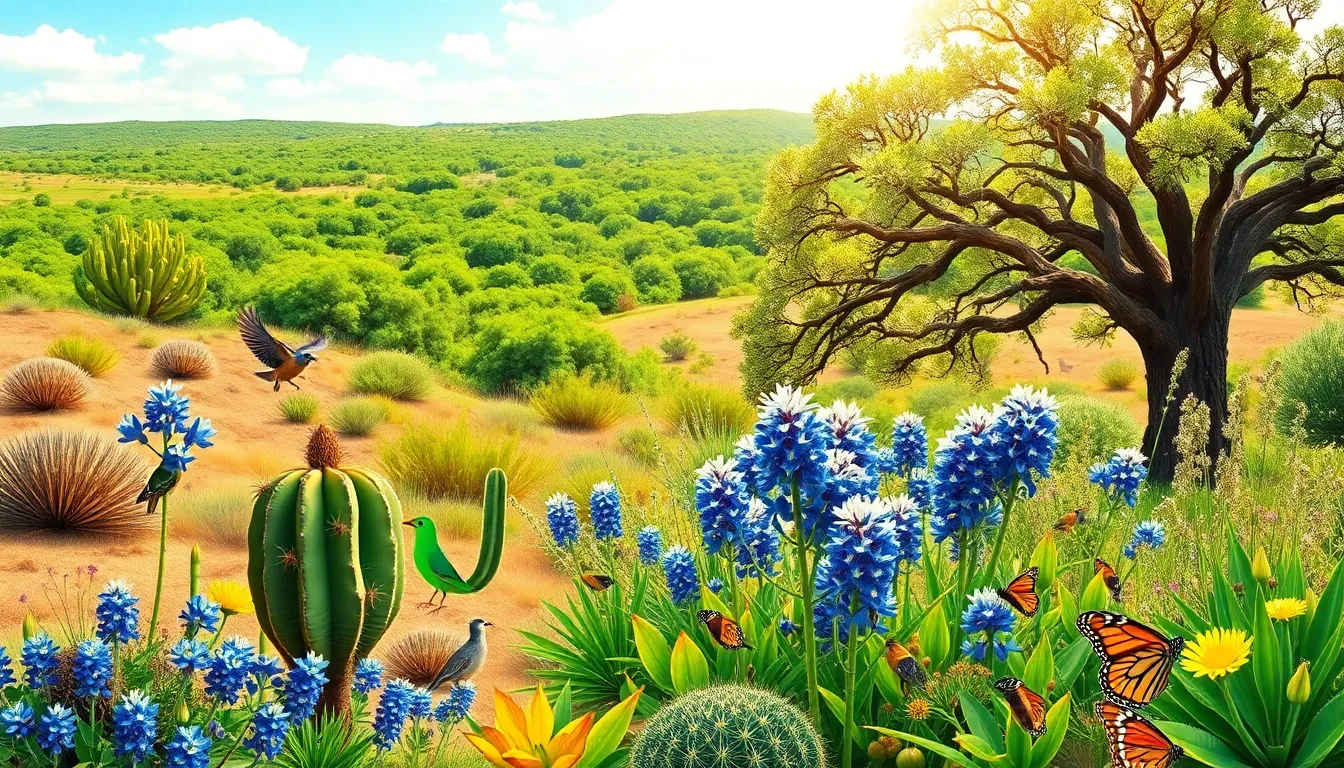Imagine strolling through a Texas landscape that boasts a rich tapestry of greenery, each plant telling its own story. Native plants in Texas aren’t just available: they thrive, adapting and evolving in ways that reflect the spirit of this vast land. Known for its impressive diversity, Texas is home to a stunning array of flora that supports local ecosystems and enriches our gardens. In this text, he’s going to explore the amazing world of Texas native plants, their significance, and how you can embrace them in your landscape. Strap in: it’s time to dig deep.
plants native to texas

Texas, the Lone Star State, wears its botanical diversity like a badge of honor. With a range of habitats stretching from deserts to coastal areas, this state proudly hosts over 5,000 native plant species. These plants have evolved, perfectly adapted to Texas’ unique climate, soil conditions, and wildlife. From the rugged mountains of the Trans-Pecos to the lush landscapes of East Texas, there’s flora for every terrain. If one thing stands out about them, it’s their resilience. They can survive droughts, floods, and the occasional angry poke from a cactus.
Native plants provide vital ecosystem services, offering food and habitat for a variety of wildlife. They’re not just pretty faces: they’re nature’s efficiency experts, improving soil quality and reducing erosion. Understanding these plants’ backgrounds and roles in the ecosystem helps us appreciate their value in our changing world.
Importance Of Native Plants
The importance of native plants in Texas ranges beyond just aesthetics. These plants play critical roles in sustaining the locale’s biodiversity. They provide food, shelter, and nesting materials for birds, insects, and other wildlife. Besides, native plants require significantly less water compared to their exotic counterparts. This makes them champions in water conservation, especially relevant in Texas where drought conditions frequently strike.
Economically, native plants lift local economies. They require less fertilizer and fewer pesticides, which can eventually reduce gardening costs for homeowners and businesses alike. Also, fostering native plants contributes to habitat preservation, which is vital for maintaining Texas’s ecological integrity. In essence, embracing Texas native plants not only beautifies landscapes but also nurtures the very fabric of local ecosystems.
Common Native Plants in Texas
Regional Variations In Native Flora
One of the more fascinating aspects of Texas’s vegetation is its regional variation. Each area boasts its own unique native plants that tell tales of that specific environment. This makes exploring Texas native plants not only interesting but also educational. Having a grasp of these differences can help gardeners make informed choices about plants that will thrive in their home landscapes.
Plains And Prairies
In the vast plains and prairies, you might encounter the stunning Texas bluebonnet, a symbol of the state. These striking blue flowers bloom in dense clusters, turning the landscape into a sea of blue come spring. Alongside them, you’ll find Indian paintbrush and various grass species that add striking contrast and nurture local wildlife.
Hill Country
Moving toward the Hill Country, you’re greeted by the vibrant wildflower displays, including the lovely Mexican hat flower and the omnipresent yucca. These plants thrive in the rocky terrains and balance with the stunning limestone hills. Their unique adaptations, like deep taproots, allow them to make the most of the sparse water supply.
Desert Regions
In the arid deserts, resilience reigns supreme. Cacti, like the prickly pear, showcase the ability to survive harsh weather and low water availability. Smoke trees and ocotillo stand as living examples of nature’s adaptability, decorating the desert with vibrancy even though the challenging conditions.
Coastal Areas
While the deserts and prairies are certainly captivating, Texas’s coastal areas also present a unique native plant palette. Beach sunflower and sea oats are common sights along the sandy shores. These hardy plants help stabilize dunes, preventing erosion and creating habitats for shorebirds and other coastal wildlife.
Also, mangroves and salt marsh grasses are essential in their ecosystems. They offer nursery grounds for various fish species and serve as buffers against storm surges. Each plant plays a role, reinforcing the delicate balance of coastal ecology.
Cultivating Texas Native Plants
Cultivating Texas native plants offers a plethora of benefits for any gardener. Luckily, they often require less maintenance, making them perfect for those who admire a thriving landscape without hefty upkeep. The first step in cultivating these plants is understanding the specific plants suited for your region.
When planting, consider creating a native plant garden that mimics natural ecosystems. Incorporate various layers, tall plants, shrubs, and ground covers, to promote biodiversity. Native plants can attract beneficial insects and pollinators, creating a vibrant garden full of life. Also, using organic mulch can help retain moisture and suppress weeds, enhancing plant health.
Also, attending local plant sales and speaking with native plant organizations can provide valuable resources and tips for successful cultivation. Embracing native plants not only adds beauty to homes but plays a part in conservation efforts.
Conservation Of Native Plant Species
Conserving native plant species in Texas is imperative, as various factors threaten their existence. Urban development, invasive species, and climate change all contribute to the decline of native flora. But, awareness and education can spark positive change. Many dedicated organizations in Texas focus on preservation, restoration, and educational outreach.
Engaging the community through local volunteer programs can help restore habitats impacted by human activities. Establishing native plant gardens can serve as living examples of conservation in action. By promoting awareness and appreciation for diverse plant life, the aim is to foster a culture of preservation.

